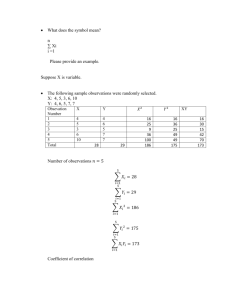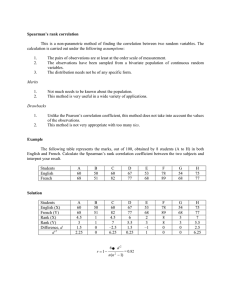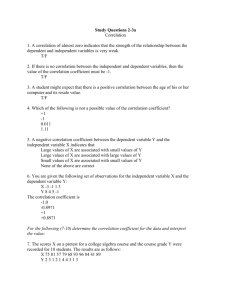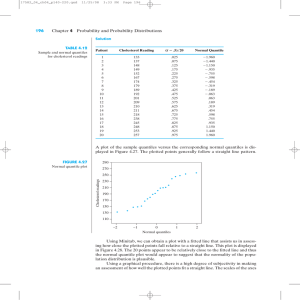Example 1: Scatterplot and Correlation Coefficient
advertisement
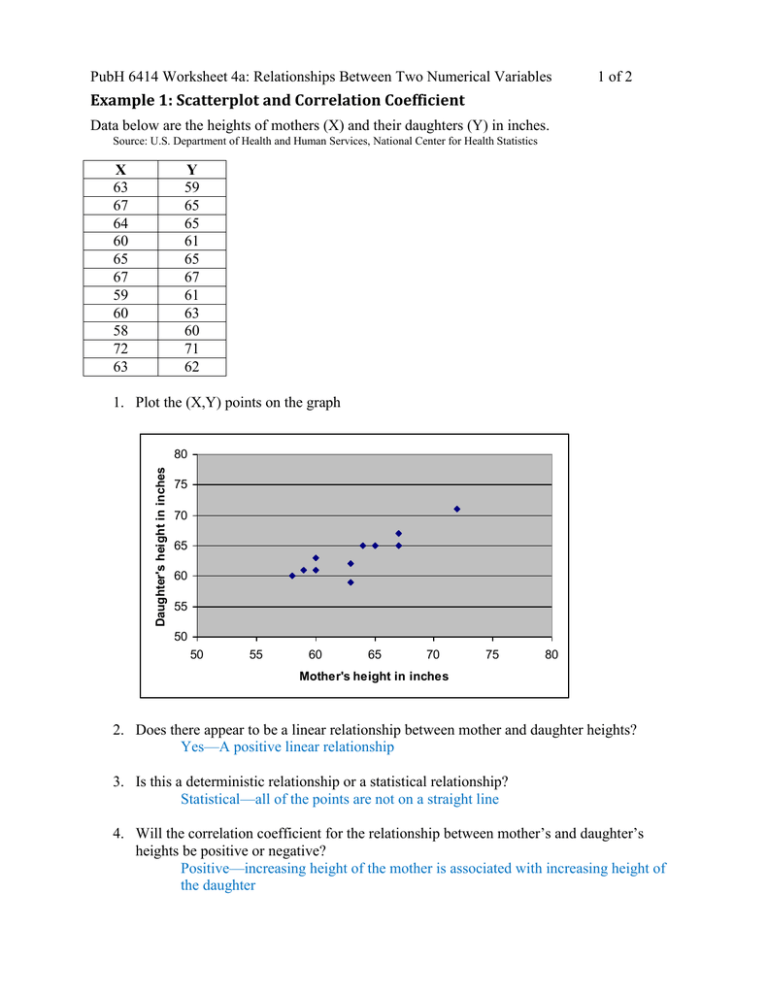
PubH 6414 Worksheet 4a: Relationships Between Two Numerical Variables 1 of 2 Example 1: Scatterplot and Correlation Coefficient Data below are the heights of mothers (X) and their daughters (Y) in inches. Source: U.S. Department of Health and Human Services, National Center for Health Statistics X 63 67 64 60 65 67 59 60 58 72 63 Y 59 65 65 61 65 67 61 63 60 71 62 1. Plot the (X,Y) points on the graph Daughter's height in inches 80 75 70 65 60 55 50 50 55 60 65 70 75 80 Mother's height in inches 2. Does there appear to be a linear relationship between mother and daughter heights? Yes—A positive linear relationship 3. Is this a deterministic relationship or a statistical relationship? Statistical—all of the points are not on a straight line 4. Will the correlation coefficient for the relationship between mother’s and daughter’s heights be positive or negative? Positive—increasing height of the mother is associated with increasing height of the daughter PubH 6414 Worksheet 4a: Relationships Between Two Numerical Variables 2 of 2 5. Which of the following correlation coefficients represents the strongest linear relationship? a. 0.76 b. 0.24 c. -0.89 this value is closest to either 1 or -1 d. -0.03 Example 2: Correlation Coefficient and Coefficient of Determination A study enrolling 40 women found that the correlation coefficient between cholesterol (y) and weight (x) was 0.493. A scatter plot of the data did not indicate any outliers or curvilinear relationship. 1. Describe the direction and strength of the linear relationship Positive with a fair degree of linear relationship 2. What proportion of variation in cholesterol is explained by the linear association between cholesterol and weight? the coefficient of determination = R2 = (0.493)2 = 0.243 24.3% of the variation in cholesterol is explained by the linear association between cholesterol and weight 3. As a result of the correlation coefficient or coefficient of determination, can we conclude that change in cholesterol is caused by change in weight? No—the correlation coefficient does not provide information about causality 4. Indicate the direction of the scatter of points on a scatter plot of the data for this analysis: a. upper left to lower right b. lower left to upper right (increasing weight is associated with increasing cholesterol) c. no evident pattern d. increasing from lower left, then decreasing



